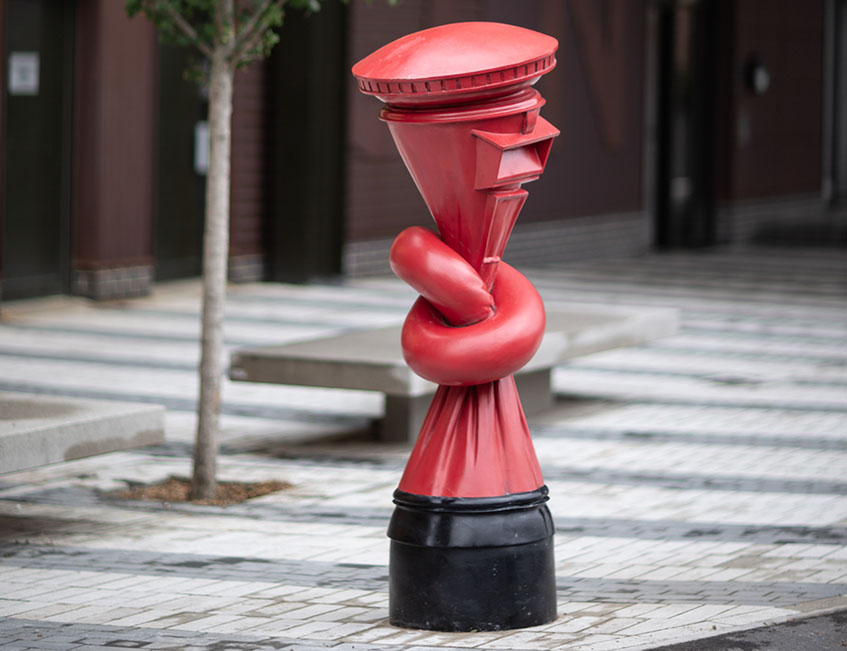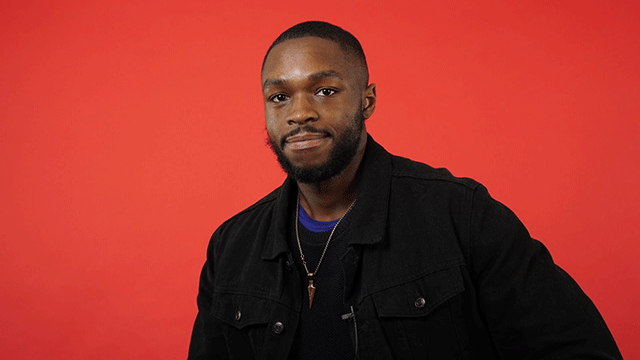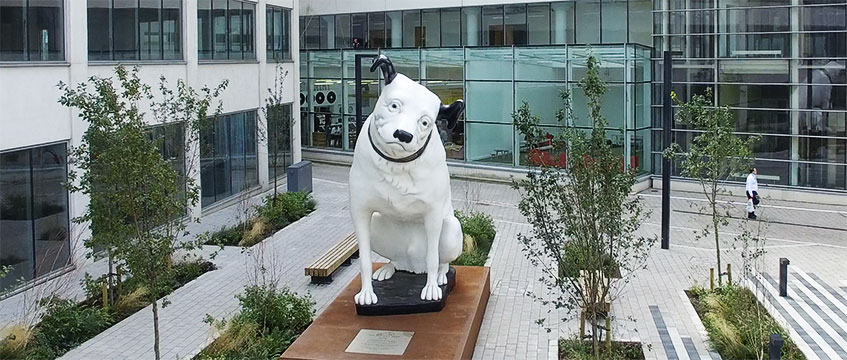COMMENT: There’s an elephant on a tricycle in Bromley. In Canning Town there’s a twisted postbox. Greenwich boasts a parrot on a plinth and in Hayes there’s a giant Nipper the Dog (pictured above). Why? Because U+I put them there.
We believe that public art is one of the most important ingredients in placemaking – the spice that makes the recipe sing.
Many people in our industry would disagree. When money is tight and times are hard, public art is often the first expense to be ditched. That may help the budget in the short term, but in the long term it makes no sense. Public art has a power that reaches way beyond its scale, and I’ve seen it first-hand.
Our St Mark’s Square development in Bromley was built on the 600-space Westmoreland Road car park and includes a landscaped public square surrounded by a multiplex Vue cinema, cafés and restaurants (including Pizza Express, Nando’s and Prezzo), a 130-bed Premier Inn hotel, 200 private and affordable apartments and a new 400-space underground car park.
But people who work, live and shop in Bromley don’t say: “Have you seen that Premier Inn?” They say: “Have you seen that elephant on a tricycle?”
Kids in Canning Town marvel at the Alphabetti Spaghetti postbox (pictured below). Students in Greenwich laugh at the dead parrot. And Nipper, the old HMV icon, has helped create a sense of place at the Old Vinyl Factory in Hayes, west London, referencing its heritage as the former EMI record-pressing plant.

Appreciating assets
These responses show that public art is life-enhancing. It can give communities a sense of pride – a recognition that someone, somewhere thought they deserved something special. It can encourage people to engage with one another. Perhaps most importantly, it can contribute to a place’s identity and the connection that communities feel with that place.
Today, more than ever, civic spaces are under threat, eroded by the exponential growth of online activity. We can just let it happen or we can react by doubling down on our efforts to create an emotional and experiential connection with place.
But public art doesn’t just provide social value – it has economic and financial benefits too. At the most basic level, it is a smart marketing tool. Like a quirky waistcoat worn with a grey suit, it’s distinctive, it’s different and it adds value to the surrounding property, be that offices, shops or apartment blocks.
But the financial benefits go much further than that, particularly if the art has been well bought. At U+I, for example, we are often the 100% owners of the artworks we have commissioned. They are on our balance sheet as assets. When we sell developments, we usually keep the art.
As everyone knows, good art increases in value over time – often considerably. That means the strength of our balance sheet is bolstered by the public art we own. They are appreciating assets.
The benefits of public art are like rich, daily dividends… it makes ordinary places a little bit extraordinary
Making money and happiness
The benefits are like rich, daily dividends. Because good art makes people smile, it makes people feel rooted to their place, and it makes ordinary places a little bit extraordinary.
In other words, public art has multiple values – social, emotional, commercial and financial. It can also make the accountants happy, it’s an asset for shareholders and it makes local communities feel good.
That’s why we have allocated £10m to public art over the next seven years, as part of a regeneration budget stretching into the billions. I would like it to be more – and perhaps it will be. Because at U+I, our mantra is: you will know us by the places we create. Public art helps us to deliver on that promise. It makes money, it makes happiness and it makes great places.
Let’s dream of beautiful public art being as common as a postbox on every other street.
Richard Upton is chief development officer at U+I











